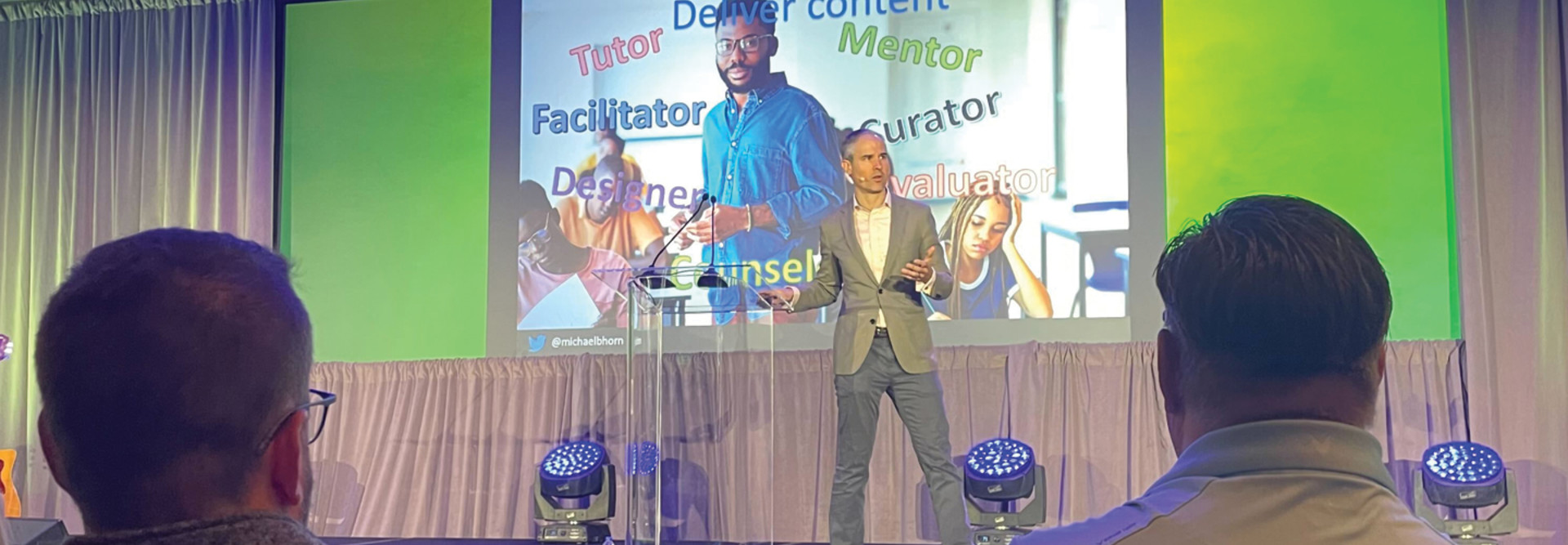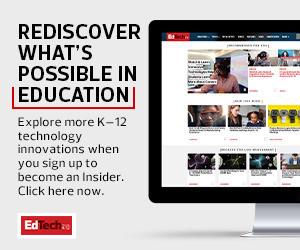Innovate with a Mastery-Based Education Model
Horn suggested that K–12 schools start with small groups of innovators who can experiment with new technologies and ways of teaching. To better support students, he argued that schools should take a mastery-based approach.
“We have an education system today that is fixed time, variable learning,” Horn said, explaining that this is a system that moves from content delivery to testing to the next round of new material, with assessment feedback being delivered to students late or not at all.
“What if learning is fixed and time is the variable?” he asked the audience. Education centered on mastery would allow students to complete assessments and progress at their own pace, moving on to new material only after they’ve mastered current lessons.
KEEP READING: Personalized learning allows students to learn at their own pace.
One key element of a mastery-based model is educators and students working on the same side of the process. The educators should be able to support learning and encourage students to master material. Horn shared one higher education example in which students are taught and assessed by different instructors. As a result, there’s no animosity between teachers and students, allowing them to work together more effectively.
Working with Generative AI and Other Tech Innovations
Speakers on Tuesday also addressed the need for educators — and school systems as a whole — to work with students rather than against them. Talking specifically about generative artificial intelligence, the technology behind ChatGPT, panelists in the session “Education and the AI Conundrum” agreed that teachers shouldn’t ban the tech in their classes.
“We have this window of opportunity during which we can connect with students and show them how to use this tool in a way that is ethical, in a way that is responsible, in a way that is going to propel them forward in their own life,” said Allison Reid, senior director of digital learning and libraries at North Carolina’s Wake County Public School System. “Or, we can choose to tell them that we are blocking it, and when we do that, it puts us in an adversarial role between our students and their learning.”
Keith Bockwoldt, CIO at Hinsdale Township High School District 66 in Illinois, agreed. “We have to teach our students how to use this tool,” he said.
He added that his district’s educators are less worried about students using ChatGPT to cheat on writing assignments because the district uses Google Workspace for Education. Teachers can look at the revision history of the Google Docs to determine if entire paragraphs have been pasted from elsewhere, indicating plagiarism or the use of generative AI.
MORE ON EDTECH: Technology is a guardrail for digital citizenship.
“We have to change our mind about grading and assessments,” Reid said. “If we start with a recipe, are we not cooking anymore?” She mentioned that generative AI is going to be embedded in tools schools are already using, if it’s not there now. Notably, Microsoft and Canva already use this type of AI in their products, she said.
Alison Schlotfeldt added that this is the perfect time to rethink assessments in K–12 education. “When Google started, we tried to create un-Googleable assignments, but it’s how many years later, and we’re still creating Googleable assignments,” said Schlotfeldt, curriculum integration specialist at the School City of Mishawaka in Indiana. “ChatGPT is here to push us one more time to make un-ChatGPTable assignments.”
Panel moderator Pete Just, executive director of the Indiana CTO Council, said that innovations like ChatGPT may force teachers to rewrite lesson plans, and that’s not necessarily a bad thing.
Join EdTech as we provide written coverage of CoSN2023. Bookmark this page and follow us on Twitter @EdTech_K12.











